[As an experiment, I’m testing the use of an ‘abstract’ for my posts. Those who don’t want to grind through the long version but would like to know if it might be worth the grind can have an overview of what the post is all about. I’ve called it ‘In Essence’.]
In Essence:
One of the interesting questions waiting to be answered on 20 September this year is how Christchurch voters will respond to the government’s efforts over the last three years in the earthquake recovery process. A significant feature of the 2011 election was the collapse of the Labour Party vote. When the voting patterns of that election – and the 2005 and 2008 elections – are examined in detail it’s clear that a significant number of previous Labour voters simply stayed home, right across the city from east to west.
Since 2011, the government and its institutions (e.g., CERA, EQC, CCDU) have come under immense criticism; red-zoning decisions, including over bare land sections, have led to court case losses for the government and huge stress for individuals and families; insurance payouts have ground out slowly and ground people down in the process; the central city ‘blueprint’ has been fraught in its implementation, increasingly unpopular, has scared off some investors and has been interminably delayed; the cost-sharing agreement reached with the previous council – and which includes significant costs for highly controversial ‘anchor projects’ in the central city such as the stadium and convention centre – has strapped Christchurch people into a financial strait-jacket; there have been accusations of mismanagement of asbestos during the demolition and repair process; rents have headed skywards and there’s been repeated flooding.
But some people have benefited: those who have bought cheap rentals and benefited from the hyper-inflated rental market; businesses and workers involved in the repair and demolition process and, now, the rebuild; some major central city landowners who have effectively had their sunk capital in the city centre bailed out by the imposition of the Central City Recovery Plan. To state the obvious, what’s happening in Christchurch is complex.
But it’s hardly a brave prediction to suggest that, electorally, the National Party reached its high water mark in Christchurch at the 2011 election – the only question is how much, and how fast, the tide has changed since then.
Looking more broadly, there’s also the other as yet unanswered question; a question that, if it was possible to answer, would shed light on the nature and values of New Zealand society: To what extent will the government’s performance in Christchurch since the earthquakes affect what New Zealanders outside of Christchurch and Canterbury do in the privacy of the polling booth? And, the really provocative and revealing corollary: To what extent should it affect how people outside of Christchurch vote?
The way it was
The year 2011 began in Canterbury with the major, debilitating February earthquake. It was a year in which the government established the Canterbury Earthquake Recovery Authority (CERA). It was the year after commissioners had replaced elected representatives in Environment Canterbury (ECAN).
In 2011 and less than nine months after the February earthquake the voters in Christchurch – and beyond – seemed happy enough, collectively, to return the government.
But what about this time?
In 2011, the National Party gained more party votes in Christchurch electorates than the Labour Party. (It had done the same in 2008 but by a lesser margin.)
If Waimakariri and Te Tai Tonga are not counted, in 2011 the National Party gained 47.10% of the party votes cast in Christchurch and Labour achieved 27.48% (see Figures to follow). This was almost identical to the result across the country.
Meanwhile, in Christchurch in 2011 the Green Party did better than its national performance, gaining 14.72% of the party vote while New Zealand First did slightly worse than it did nationally, gaining 5.17% of the vote.
One of the interesting questions about the 2014 election is how the events of the last three years in Christchurch will affect the prospects for a third term of a National-led government.
How things are
Since 2011 there’s been the establishment of the Central City Development Unit (CCDU) within CERA, the launch of an ambitious Central City Recovery Plan (‘the Blueprint’), a continuing series of trials and tribulations over the performance of the Earthquake Commission (EQC), insurance companies and the Christchurch City Council (CCC), a rental crisis that shows no signs of abating, constant infrastructure-related roadworks throughout the city (led by the Stronger Christchurch Infrastructure Rebuild Team – SCIRT), court cases over the government’s red zoning of houses, an enquiry into the CTV building (which collapsed in the February 2011 earthquake, killing 115 people -see Part 3 of the Canterbury Earthquakes Royal Commission Report), an investigation by Worksafe New Zealand on possible asbestos contamination from demolition and rebuild activity (and possible issues with ‘toxic concrete dust‘).
Where, then, are Christchurch people ‘at’ and how will that translate into electoral outcomes?
It’s a complicated picture which, from the government’s perspective, has some good, some bad and some very ugly in it.
The place to start to understand what might happen this year, electorally, is the past.
Past voting patterns
I’ve produced a spreadsheet of the electorate-by-electorate results in Christchurch for the main and minor parties in the 2005, 2008 and 2011 elections. (I tried, but failed, to incorporate it into the post.)
All numbers I’ve used in all of the following have come from the official New Zealand Electoral Results website.
As I said, the 2011 election saw National sweep the major portion of the party vote pool in the urban Christchurch electorates (even more so if Waimakariri, but not Te Tai Tonga, are counted – 48.66% for National, 26.77% for Labour, 13.66% for the Green Party).
The absolute party votes for the 2011, 2008 and 2005 elections, however, show an even more interesting picture. In 2011 there were a total of 157,622 party votes cast in the five, urban general electorates in Christchurch.
That compares with a total of 177,090 party votes cast in those same electorates in 2008 and 182,310 in 2005. Between 2008 and 2011 that’s 19,468 fewer party votes over five electorates – an average of about 4,000 fewer per electorate. Of course, the ‘deficit’ varied from electorate to electorate.
[Note: Banks Peninsula became Port Hills between 2005 and 2008 so the decrease between those years is not directly comparable to that in other electorates.]
The smallest reduction was from 37,131 in 2008 to 34,365 in 2011 in Gerry Brownlee’s electorate of Ilam (that’s a reduction of 2,766 votes or -7.45% of the 2008 total). The greatest reduction between those two years was in Christchurch East with a drop from 34,629 in 2008 to 28,977 in 2011 (5,642 fewer votes or -16.32% of the 2008 turnout). A close second was the reduction in Christchurch Central from 33,142 party votes in 2008 to 28,261 in 2011 (4881 votes or -14.73%).
National improved its absolute number of party votes between 2008 and 2011 from 71, 363 to 74, 581 an increase of 3,218 (or +4.5%). Between the same elections Labour dropped its party vote in the five Christchurch urban electorates from 66,474 to 42,957, a decrease of 23,517 votes (or -35.4%).
Meanwhile, the Green Party increased its party votes from 16,698 to 23,266 votes, an increase of 6,568 (or +39.3%). Similarly, New Zealand First increased its vote from 5,340 to 8,099, an increase of 2759 (or +51.67%).
By contrast, the three minor parties decreased their share of the vote – in ACT’s case a decrease of 3,431 votes (or -76.2%). Interestingly, this absolute vote drop for ACT is greater than the absolute vote increase for National.
The figures lead to some interesting conclusions.
Even if it is assumed that all votes gained by National were at the expense of the Labour Party (unlikely given the collapse of the ACT vote) and that all votes gained by the Green Party were also at Labour’s expense, that amounts to a ‘shift’ between those three parties (from Labour and to National and the Green Party) of 9,768 votes from 2008 to 2011. Even if New Zealand First’s increased vote of 2,759 is added, that still would only explain 12,759 of Labour’s vote loss. The Labour Party, however, lost 23,517 party votes in Christchurch between those two elections.
[There was also the absence of the Progressive Party in the 2011 election. That party won 4,911 party votes in the five urban electorates in 2008. Where best to apportion these voters between the other parties or as ‘absent’ votes in 2011 is very difficult to judge.]
Losing votes to other parties was therefore clearly not the only cause of Labour’s decline in party votes in the Christchurch urban electorates.
One obvious possible other cause includes people exiting the urban electorates as a result of the earthquakes.
An electorate by electorate comparison between the National and Labour Party party votes sheds some light on this possibility.
While National’s party vote increased in all electorates (sometimes only marginally) Labour’s vote plunged everywhere. Unless the earthquake caused 2008 Labour voters to exit Christchurch, in all electorates, in a way that National’s voters didn’t (e.g., because National voters were more able to find accommodation in other parts of Christchurch) it seems that the earthquake exodus cannot be the whole story.
Still, those in Christchurch East and Christchurch Central (previous Labour strongholds) may have simply been so harassed by the ongoing process of ‘recovery’ (see section below) that they could not summon the interest or motivation to vote and such people may have been more likely to have been Labour voters in 2008 than National voters.
A look at the voters on the electoral roll compared to the electoral population bears this out to a degree (see Table and Graph below). There was a significant dip in electoral roll registrations in Christchurch East and Christchurch Central (the previously strong Labour electorates) compared to the other Christchurch electorates (the table and graph include Waimakariri and Te Tai Tonga).

Electors on Electoral Roll by Electorate – 2005, 2008, 2011 [Note: The 2008 Electoral Population for Ilam should read ‘59,869’ the same as for 2011]
But that doesn’t explain the plunge in less affected electorates such as Ilam (in the northwest of the city). In that electorate, the Labour Party vote went from 10,168 party votes in 2008 to 6,552 in 2011 – almost a 40% decline.
The likely major cause of the lower Labour Party vote was therefore simply that 2008 Labour voters decided not to vote at all. That goes some way towards explaining the reduction in turnout in Christchurch urban electorates of some 19,468 voters overall.
A look at the nationwide voter turnout supports this conclusion.
While registered voters steadily increased by 80,088 from 2008 to 2011 the absolute turnout dipped by 97,491. As a percentage drop in absolute terms, that amounts to a nationwide reduction of 4.1% (i.e., just on the number of votes without considering the increased number on the electoral roll). In Christchurch, the corresponding percentage drop in absolute terms was 10.99%.
Further, the absolute drop in votes for Labour, across the country, between 2008 and 2011 was 796,880 – 614,937 = 181,943, or a 22.8% decline. The absolute drop in Labour votes in the five urban electorates was 23,517 or a decline of 35.4% on the party vote in 2008.
What seems to have happened in Christchurch in 2011 was an amplified collapse of the Labour Party vote compared with the rest of the country. While it is impossible to know for sure, four things may have combined to produce such a result:
- The population was already disheartened and motivation was low (as a general principle, this ‘lack of interest’ is known to disproportionately affect turnout in lower socio-economic people with less formal education);
- in the case of previous Labour Party voters that may have compounded with a perceived unlikelihood of Labour regaining the treasury benches;
- that, in turn, compounded with whatever disillusionment the general electorate felt for Labour (and clearly that was significant in itself);
- finally, that general disillusionment with the Labour Party may have reinforced the impression that there would be no improvement in the hardship being experienced if there was a change in government.
In the graph above I’ve also plotted the ‘expected’ turnout, given the increase in registered voters, if the same percentage of registered voters had turned out to vote as in 2005. The shortfall is around 200,000 voters in 2011. That’s not much more than the drop in the Labour Party vote (181,943 votes).
So, has anything changed in the last three years?
How’s that recovery going?
Reading the local newspaper this year won’t have been Gerry Brownlee’s favourite past-time.
The hoped for ‘jewel in the Crown’ of the government-led management of the Christchurch rebuild was always going to be the much heralded Central City Recovery Plan – the ‘blueprint’. Announced in mid-2012, the plan brought tears of joy to those fortunate to be invited to the event at which Bob Parker’s dulcet tones played backing track to an animated fly-over of the city pulsing with emergent anchor projects.
Two years on there’s still tears but not much joy.
In August, 2013 The Press feature writer John McCrone began a series of articles based on the premise that the rebuild was ‘stalling’ – the first titled ‘Rumblings of rebellion in Christchurch‘:
The rumblings of rebellion have become almost constant. The Human Rights Commissioner David Rutherford was in Christchurch a few weeks ago and asked to deliver a message to Wellington, apparently.
Under Brownlee, the recovery is stalling. Roger Sutton, as chief executive of the Canterbury Earthquake Recovery Authority (Cera), is being stifled by his minister. The process is turning bureaucratic, fixated on policies and precedents, losing touch with the people of Christchurch.
Perhaps Brownlee ought to be bypassed and Sutton report direct to Prime Minister John Key? Or a board of directors representing Christchurch’s interests inserted between the two to take Brownlee out of the equation a different way?
Then a week ago, it emerged that three well-known Christchurch business leaders had written privately to Brownlee about the need for a change.
In January this year McCrone asked ‘Is the city’s blueprint dream evaporating?‘. The answer became clear.
Typical was the fate of the ‘Epic’ initiative that was meant to anchor the ‘Innovation Precinct’:
Epic was a citizens’ initiative and halfway to being built when the Government got excited about the project. Steven Joyce with his new super-ministry MBIE (Ministry of Business, Innovation and Employment) stepped in to insist that Earthquake Recovery Minister Gerry Brownlee include it almost at the last minute in the Christchurch Central Development Unit’s (CCDU’s) 100 day Blueprint masterplan.
…
On paper, it was a bold idea. But then the heavy micro-managing hand of bureaucracy descended. Government departments trying to engineer a commercial outcome.
Andersen [a founder of EPIC] struggles here to remain polite – it does not really pay to be critical of those who have such complete authority over the city at the moment.
But he admits: “We got preached to by MBIE that they wanted the innovation precinct initiative to be market-led. But then they’ve spent the next two years telling the market what it will be.”
Here we are 17 months after the Blueprint and progress has slowed to a crawl.
One central city developer summed it up like this:
Lisle Hood, developer of the Lichfield Lanes project, centred around Poplar St, says the CCDU is trying to drive a square peg into a round hole.
Hood says perhaps the CCDU will get half what it wishes for. It might find one or two large corporate tenants to kickstart a transition – Vodafone is one of those known to be looking. But equally, there is the chance that the whole precinct idea might be quietly allowed to evaporate.
Hood says the CCDU has already started lifting designations on individual properties like the C1 Cafe and Alice in Videoland. Bit by bit, the plan could fragment. The spatial plan, if it is ever released, will be the test.
However in the end, says Hood, by taking over control of central Christchurch, instead of making its recovery faster, the bureaucrats appear to have achieved the opposite.
“The way they’ve handled this has set it back far further than it needed to be, even though the city still will eventually recover.”
In March, McCrone found the same story with the entire central city in an article titled ‘Christchurch Rebuild: A City Stalled‘:
So the scene was set. Big ambitions coupled to fractured relationships. A plan which could be cobbled together at speed because there was already a pre-quake wishlist of projects, but also an underlying political fragmentation that was never properly addressed.
The result could be predicted. And it is what those closest to the process are saying is largely the case. The Blueprint itself is great [Well, that’s one view], but the implementation is where it is breaking down.
Christchurch investment banker Tim Howe, co-founder of Ocean Partners, says in baldest terms, the task of the Blueprint was simple – to connect capital to a plan. And to date, the results have been dismal.
It’s worth remembering that the Central City Recovery Plan – and the specially established Central City Development Unit (CCDU) whose job it was to oversee its implementation – were deliberate decisions made by the government in order to take control of the process. Control is a fine thing but along with it comes responsibility. The applause at the launch of the Blueprint may be gratifying but, over the long run, taking credit also means taking the blame if things go wrong.
On top of the delays and disenchantment with the central city Recovery Plan there’s been a series of court cases brought against the government and it’s agencies. Most well-known has been the ruling over the legality of some red-zone offers:
The Government is appealing against a High Court ruling against the Crown’s compensation offer for red-zoned land in Christchurch.
Nearly 50 residents sought a judicial review of the offer to buy uninsured properties and empty sections at 50 per cent of the land valuation.
Yesterday, Justice Panckhurst ruled that the offer was not made according to law and should be set aside.
Helpfully, the Prime Minister chipped in by noting that “One option is the Government says: ‘Thanks very much, it’s been a lot of fun. If you don’t want to take the offer, that’s where it’s at’.“
There has also been the recent release of the promised KordaMentha report on the City Council’s financial situation.
The Christchurch City Council is facing a cost over-run of $534 million which could balloon if it fails to secure $1 billion in insurance payouts.
The grim financial picture was revealed this afternoon as the council finally released the findings of an independent audit of its finances conducted by KordaMentha
When newly-elected Mayor Lianne Dalziel and Councillor Raf Manji fronted a press conference they emphasised the serious financial position and commitments of the Council. A “number of issues are going to be back on the table“, apparently, to deal with the predicted shortfall of $534million.
But, more intriguingly, the delayed release of the long-awaited report was immediately criticised by Minister Brownlee for not being delayed even more. According to Brownlee, the Council should have awaited a further report he was seeking to check KordaMentha’s figures.
Canterbury Earthquake Recovery Minister Gerry Brownlee said the Crown had concerns about some of the assumptions made in the report and the accuracy of some of the data used.
“For those reasons on April 30 the Canterbury Earthquake Recovery Authority (CERA) asked financial consultants Morrison Low to provide their independent assessment of how the council’s financial position, as presented in the KordaMentha report, relates to the Crown’s role in the rebuild,” Brownlee said in a statement released this afternoon.…
“Constructive discussions have taken place between CERA, Treasury and council officials on drafts of the KordaMentha report in Wellington and Christchurch in recent weeks, and I had hoped the council and the government could have presented a joined up response to the final report.
“Releasing the report today raises many more questions than we are presently able to answer.”
…
“As the government is not in a position to make a fully informed comment on the KordaMentha report it is disappointing the council has chosen to release it,” he said.
The ‘fractured relationships’ identified by McCrone between Council and government continue, it would seem.
A few weeks later, the government presented its budget for the next year and, within its calculations was the previously announced (in the December Treasury update) cut to the Government’s contribution to the rebuild of Christchurch’s infrastructure by $572million, a remarkably similar figure to the shortfall figure produced in the KordaMentha Report.
And the Minister for Earthquake Recovery found himself battling on another front – this time in defence of his own mouth, aka his advisors. In Parliament Brownlee took aim at Labour MPs for their claimed lack of interest in asking questions of CERA but then had to backpedal rapidly:
A humiliated Gerry Brownlee has apologised to Labour MPs he sledged over their workrate on behalf of earthquake victims and says he feels let down by EQC.
The Earthquake Recovery Minister lashed out at Labour after they raised the plight of 85-year-old Dot Boyd, who is still waiting for repairs to her Aranui Home three years on from the Christchurch earthquakes.
Brownlee confirmed yesterday that he had discovered that Boyd may be the tip of the iceberg after EQC identified a further 85 cases where vulnerable elderly people had been left in limbo while waiting on a decision.
The bad news kept coming for the government. A report on the risk of asbestos exposure during the demolition process revealed inadequate precautions being taken and a lack of proper assessment for the asbestos risk.
But it wasn’t the first time that the dangers of asbestos had been highlighted in the Christchurch rebuild. In January 2013 the practice of covering over asbestos with plasterboard was condemned by a man who had asbestos lesions on his lungs from brief exposure 25 years ago:
The Earthquake Commission (EQC) estimates 43,000 Christchurch homes due for quake repairs could contain asbestos.
In about 10 per cent of cases, undamaged asbestos in ceilings has been encased behind plasterboard instead of being removed.
Homeowners will be told if that is done in their house, but there are concerns encasement may encourage them to hide the information when they sell their property.
In December, 2013 experts at an asbestos conference in Christchurch were ‘blown away’ by the damage and ‘staggered’ by the potential contamination:
Craig Simmons, director of construction services for the Australian Capital Territory government, said he was blown away by the magnitude of the damage to homes in Christchurch.
Mr Simmons said the potential for asbestos contamination in the city is staggering and it is crucial that it’s managed properly.
…
Australian professor and asbestos expert, Bill Musk, said he is also shocked by the scale of quake damage and the huge potential for contamination.
He said New Zealand needs to completely ban the importation of asbestos as the Australian government has done.
One visiting expert stated that “the Government and the trades sector seem to be responding well, with forums like Thursday’s providing much needed information and advice“.
Yet, in May this year documents released under the Official Information Act revealed that the Department of Labour was slow to react to the risk:
Documents obtained by Radio New Zealand show the Department of Labour had not developed a co-ordinated position on asbestos hazards in the Christchurch rebuild, almost two years after the 2011 quake.
…
This week the Government, the Earthquake Commission and Fletcher Construction gave assurances the hazardous material has been handled responsibly and effectively.
However, an email from December 2012 from a Department of Labour manager shows it was then still trying to work out the best way to deal with asbestos hazards in the Christchurch rebuild.
Among the continuing bad and sad news from ‘rebuild city’ is the record median house price in June, 2013:
Christchurch’s median house price has hit a record $381,250 as buyers continue to compete for properties.
The figure, based on May sales tracked by the Real Estate Institute, was 9.2 per cent up on a year ago.
Then in April, 2014:
House prices have set another record in Christchurch as market pressure continues to build.
The Real Estate Institute’s latest figures put the city’s median February price at $383,000, which is 9.4 per cent higher than a year ago.
Of course, the high house prices in Christchurch are partly a feature of the housing shortage and increased demand. They are behind the rental crisis that, according to Minister Brownlee, is not a crisis.
A further blow to the hopes of an ascent out of the mired recovery has been the repeated flooding (and here, and here) of parts of Christchurch that have sunk as a result of the earthquakes. A $4.5m pump is to be installed in the affected area but, meanwhile, the government has declined to red-zone the properties.
Given the numerous problems with the recovery it’s no surprise that the latest ‘All Right?’ survey of Christchurch residents has them still reporting high levels of grief, anxiety and negative effects:
• More than two thirds (67 per cent) reported that they are still grieving for what’s been lost in Christchurch.
• 65 per cent of Christchurch city residents reported feeling tired in 2014 — a 10 per cent increase on 2012.
• Less than one half (48 per cent) of respondents reported regularly sleeping well.
• Almost half (44 per cent) of those surveyed say they’re still struggling to come to terms with all that has happened as a result of the earthquakes.
• More respondents agreed that it felt like their life has been normal over the last 12 months (66 per cent in 2014, 60 per cent in 2012).
Further,
The research also found significant differences between the wellbeing of Christchurch residents who have had their insurance claims settled and those who haven’t.
This data won’t surprise Cantabrians, Ms Turner said.
“Dealing with insurance claims and property repairs can be stressful so it’s no wonder those who’ve settled their claims generally feel better than those who haven’t. Delays in settling claims are clearly having an impact on Cantabrians’ wellbeing.
“It’s also important to note that having your claim settled is not a panacea for good wellbeing. Around a third of those with settled claims still feel stressed, frustrated and feel their lives full of uncertainty.“
It is no surprise, then, that the Labour Party is making a concerted effort to tap into the frustrations of Christchurch people and to address the clear problems with the pace and nature of the recovery process.
The announcement of the ‘KiwiAssure’ policy at the Labour Party conference in Christchurch at the end of last year is one sign of this strategy. A second is the recent announcement that Labour would establish an ‘Earthquake Court’ and potentially use army engineers to provide flood protection work. The latter was the first ‘tranche’ in a promised series of announcements to help with the recovery.
There’s certainly much that has gone wrong for many Christchurch people over the last three years.
But an interesting feature of that period has been the repeated realisation that one person’s problem is often another person’s opportunity. High rentals, after all, are not just paid – they are received.
And this is where the electoral equation becomes complicated.
Making hay when the rain falls
Some in Christchurch have obviously never had it so bad, as the ‘All Right?’ survey revealed.
Others have been doing better than they could have imagined. The demand for housing is partly fuelled by ‘new landlords‘ – people who have had the wherewithal to enter the market either by buying up properties (including uninsured TC3 properties) or renting out their own house (or parts of it).
As the link explains, the Inland Revenue Department is concerned that ‘new landlords’ may not understand their tax obligations:
Andrew King, Executive Officer for the New Zealand Property Investors’ Federation said accommodation in Christchurch is under pressure with people being displaced from their homes and workers moving to the city to help with the rebuild.
“More people are renting out all or parts of their properties. In Auckland there is a high demand for rentals and a constant turnover of landlords.
“Many people renting out accommodation may be first-time landlords and some may not be aware they have to pay tax. We welcome the work Inland Revenue is doing with first-time landlords and believe this is much needed,” said Mr King.
Rental income is taxable, including income received from residential property, a room in your own home, sleep outs, caravans and holiday homes.
In Christchurch many are renting out accommodation for only four or five weeks while people are having their homes renovated.
Moteliers are also experiencing the (medium term) benefits of people occupying motels while their properties are being repaired or from rebuild workers setting up in Christchurch:
When the emergency rush receded, families were in need of a place to stay while their houses were being repaired, and engineers, insurance agents and assessors started to come in.
“Companies take out long-term accommodation contracts with moteliers so they can secure a room for their staff from out of town. A number of engineers stay in Christchurch three days a week but live in Wellington or Auckland.”
The Clarks say that attendance at Avonhead Lodge has sat around 85 per cent since February 2011. This has helped them buy two flat units right next door, upgrade most of the 13 rooms, invest in new carports, and rebuild a garage shed.
As a result, the motel’s rating has gone up from 3 1/2 stars to four.
Other businesses have, of course, also flourished. Demolition and then construction and repair firms and all the attendant support businesses in the accommodation, financial and construction sectors have provided an employment market that has one of the lowest unemployment rates in the country.
Many rebuild workers are migrants but there are also many New Zealanders from other parts of the country who have joined the ‘migration’ for the work in Christchurch – from the professional level to labouring. Some of the latter may well end up voting in Christchurch electorates.
Other beneficiaries of the last few years have been a few inner city property developers such as Philip Carter whose property fortune rebounded from $95 million in 2012 to $120 million in 2013. Of course, some in the central city have not fared so well. While the business community is, at best, ambivalent about the recovery process it is not clear where their votes may go.
And, of course, within Christchurch there has been a lot of discussion of a ‘divided city’, ‘A tale of two cities‘:
As a wave of economic recovery rolls through Canterbury, not all earthquake-affected residents are along for the ride.
The construction sector is booming, unemployment is at a near-record low and the new city being mapped out is expected to among the world’s most liveable. [I’m not sure who, exactly, expects this.]
There is much to be positive about three years on from the February 2011 quake, but stories of both success and despair continue to emerge.
Christchurch Mayor Lianne Dalziel said the biggest challenge heading into the fourth year of the recovery was the need to “unify” the city.
“It’s about recognising that people are at all different stages. We’ve got people who are angry, people who quietly despairing and people who are resolved and ready to move on and participate in the excitement the rebuild is able to generate.”
Or, in a more fractured view, there are ‘four tribes‘:
Widespread post-disaster reports described Christchurch as a tale of two cities, but it appears the division is now a little more complicated than just the quake-ravaged east and the less-affected west.
From discussions with psychiatrists, sociologists, community leaders and academics, The Press has found we are a fractured city.
The four tribes of Christchurch have been identified as: the angry, the disillusioned, the untouched and the hopeful.
Out of that ‘fractured’ picture of the Christchurch population with its cross-cutting patchworks of pain and flourishing it is anyone’s guess as to how the city will behave at the coming general election.
I don’t think it is rash, however, to suggest that the National Party reached its electoral high-water mark in Christchurch in 2011. It was an extraordinary result in extraordinary circumstances.
The only remaining question is how far that electoral tide has receded for the government. The one thing that time achieves is space to think and reflect – Christchurch people will have done a lot of that.
Somewhere between 150,000 and 200,000 people are likely to cast party votes in the five urban electorates of Christchurch. Any increase on the 2011 turnout is likely to favour party’s of the left if only because proportionately more of left-leaning voters stayed at home that year and as well as deciding not to vote for Labour they also decided not to vote for the government.
There’s one aspect of the effect on the election of the government’s performance in Christchurch, however, which remains unanswered and may well overshadow whatever the effect is in Christchurch itself.
That aspect is, very simply, how the voting behaviour of those New Zealanders outside of Christchurch is affected by the experience of those who have lived here over this time.
In the privacy of the polling booth will voters elsewhere have either the knowledge or the concern over how the government has operated in Christchurch over the last three years? Will it even figure at all in how they decide to vote?
There’s an even more pointed question: Should what has happened in Christchurch affect how other New Zealanders vote?
As I’ve mentioned before, Adam Smith famously described the situation of how an earthquake in China would affect a ‘man of humanity’ in Europe:
Let us suppose that the great empire of China, with all its myriads of inhabitants, was suddenly swallowed up by an earthquake, and let us consider how a man of humanity in Europe, who had no sort of connection with that part of the world, would be affected upon receiving intelligence of this dreadful calamity. He would, I imagine, first of all, express very strongly his sorrow for the misfortune of that unhappy people, he would make many melancholy reflections upon the precariousness of human life, and the vanity of all the labours of man, which could thus be annihilated in a moment. He would too, perhaps, if he was a man of speculation, enter into many reasonings concerning the effects which this disaster might produce upon the commerce of Europe, and the trade and business of the world in general. And when all this fine philosophy was over, when all these humane sentiments had been once fairly expressed, he would pursue his business or his pleasure, take his repose or his diversion, with the same ease and tranquillity, as if no such accident had happened.
So, again: Should what has happened in Christchurch affect how other New Zealanders vote?
Those of us in Christchurch no doubt can answer this last question – and assert that we are not a world away from other New Zealanders.
But what matters far more for understanding the state of modern New Zealand, and the health of New Zealand society, is how the rest of you answer it.

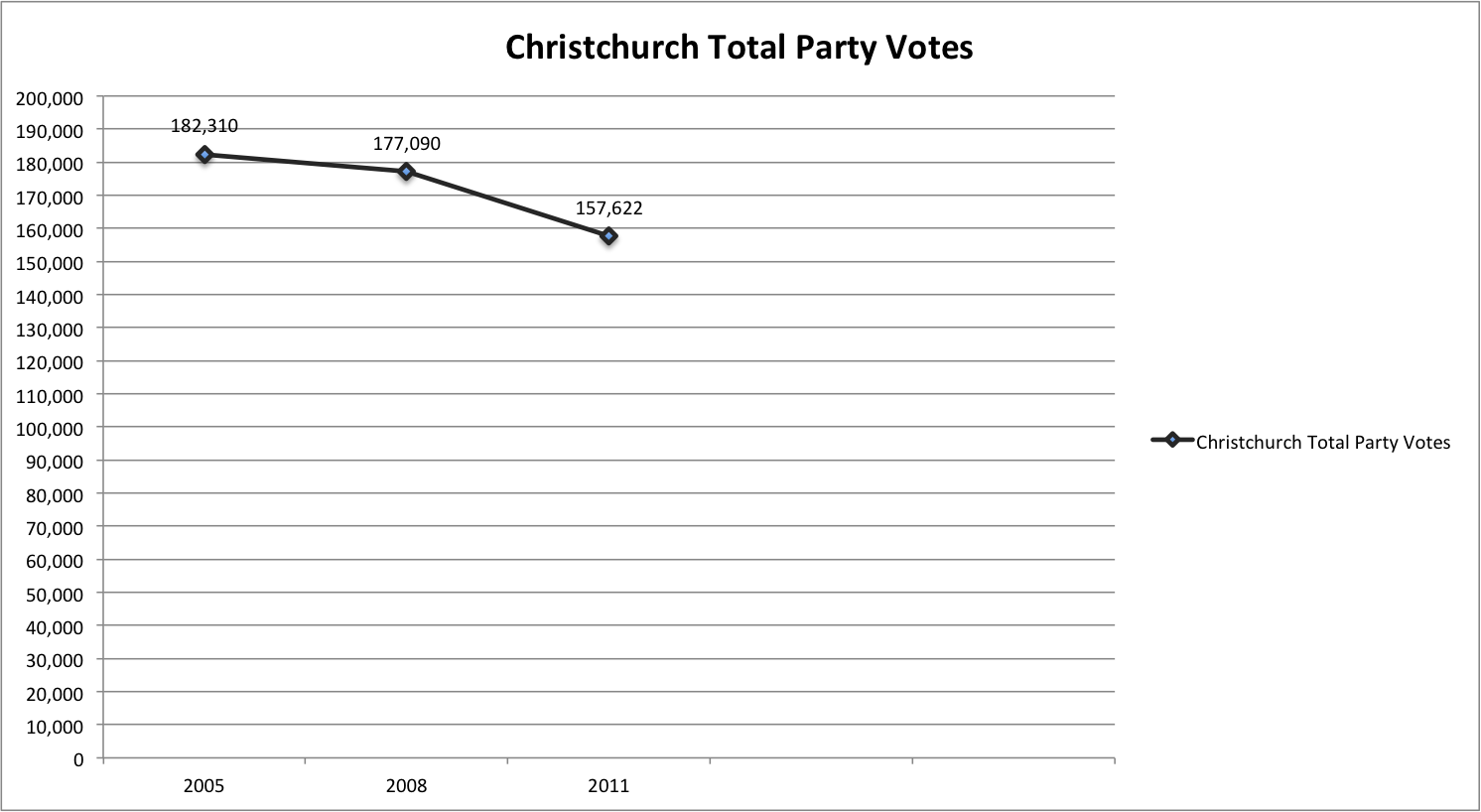
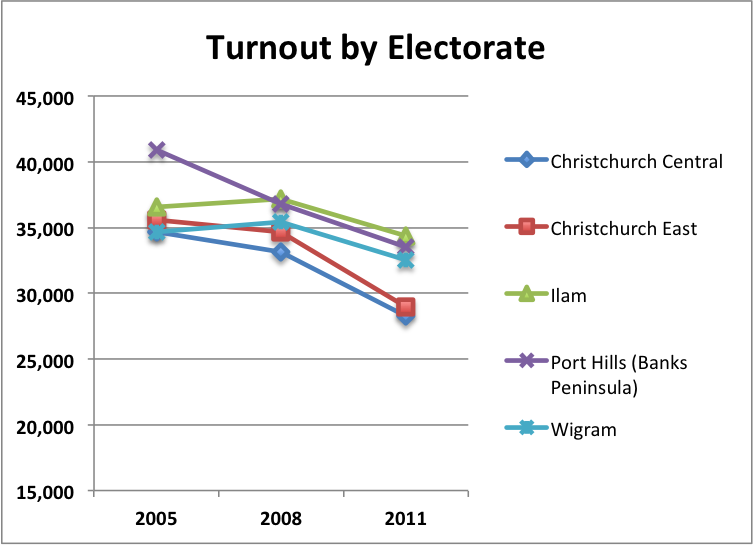
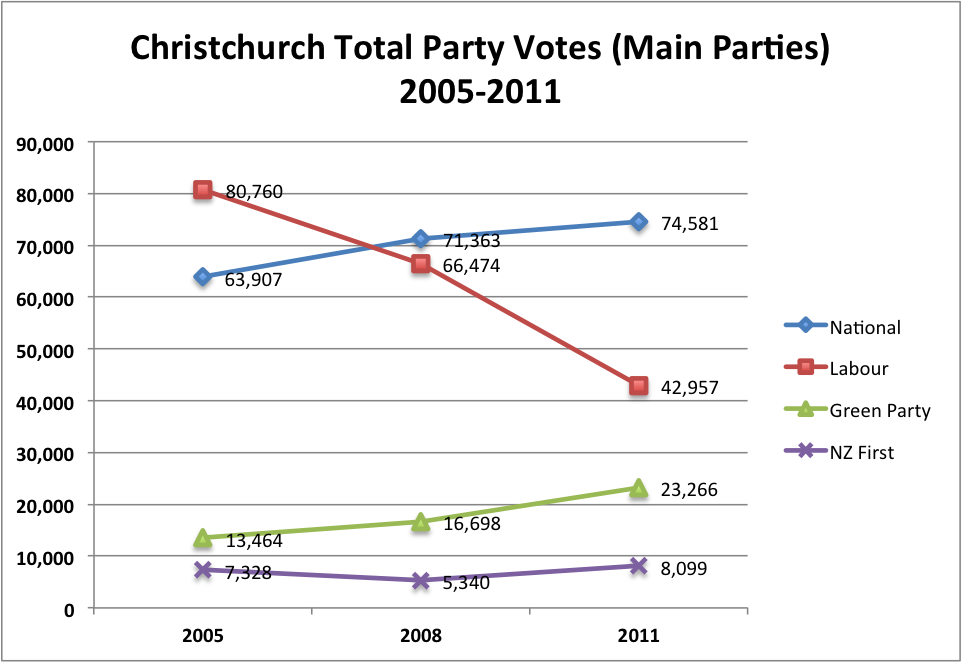
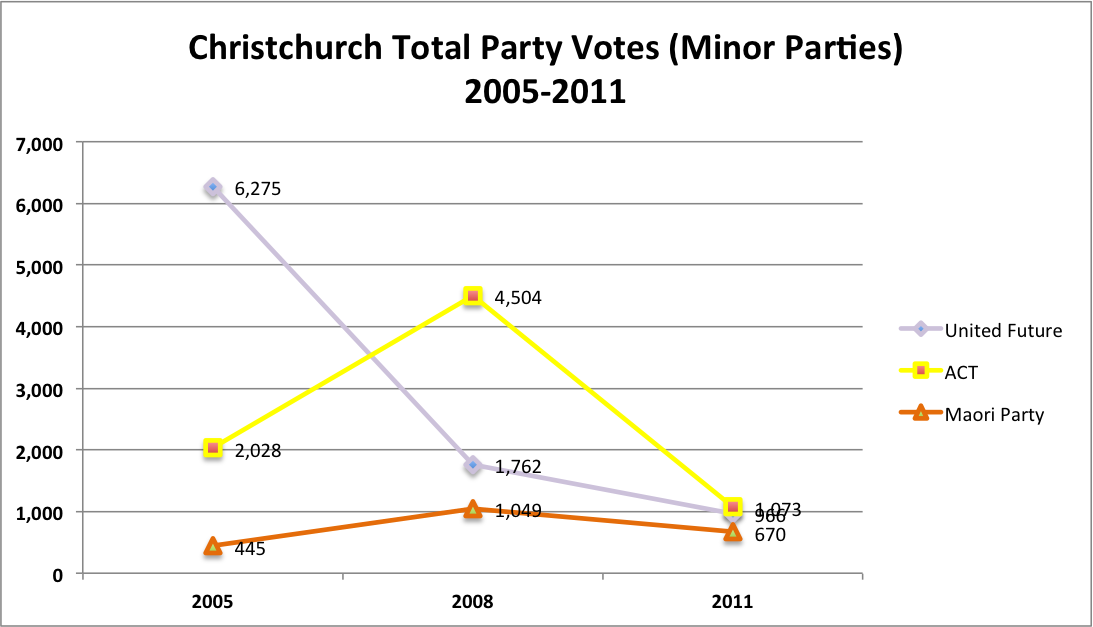
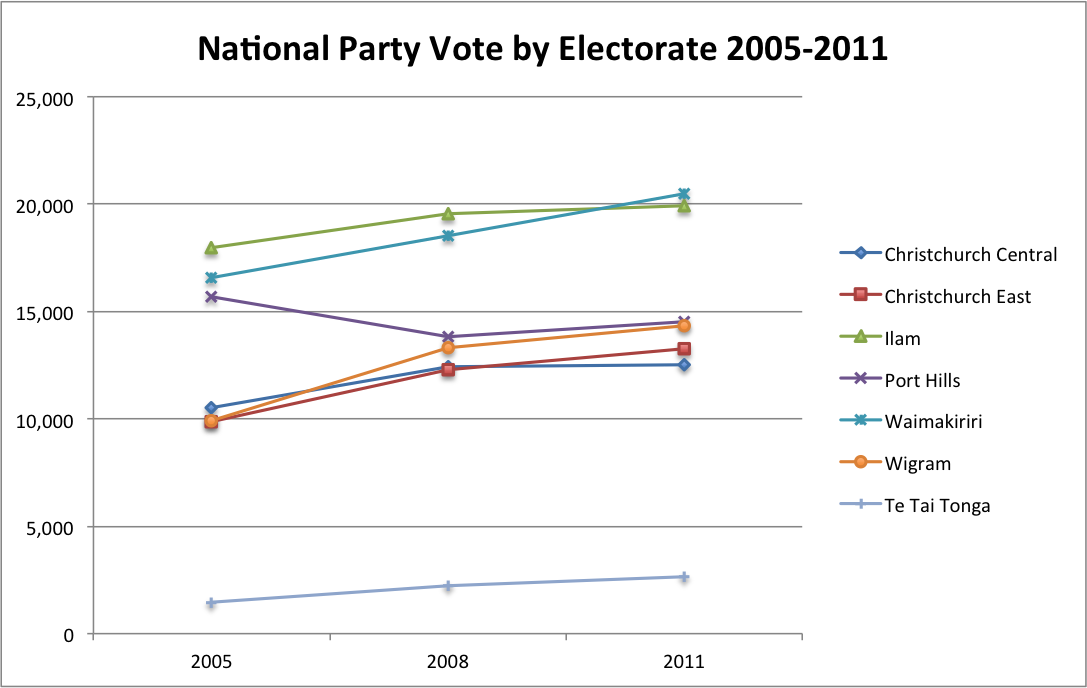
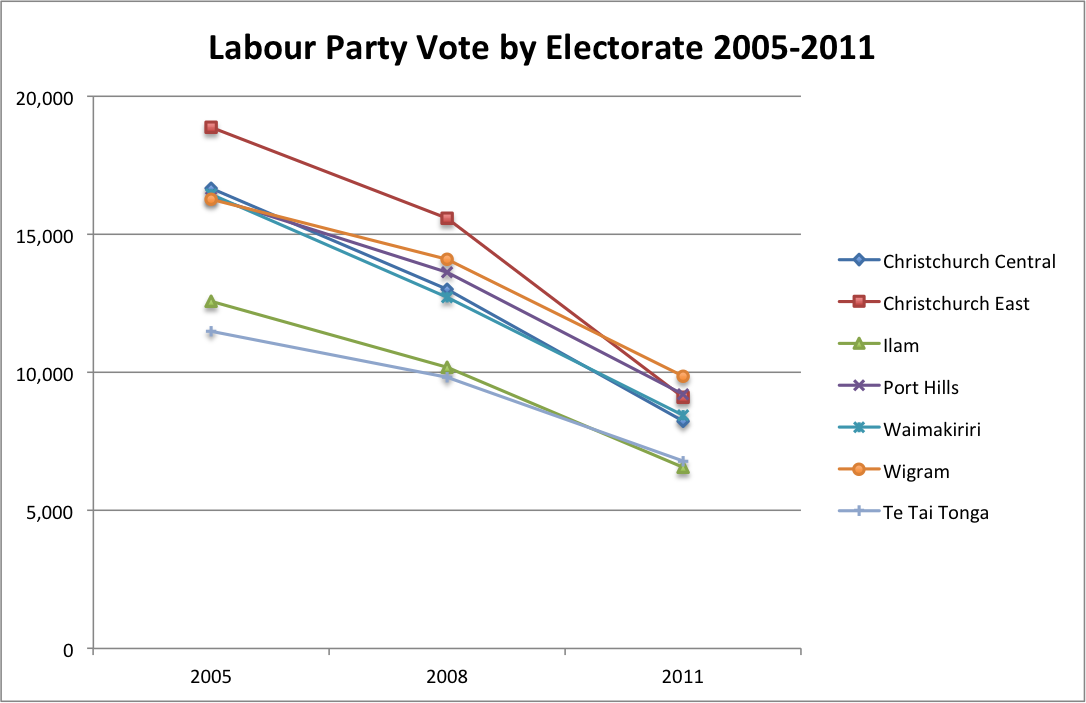
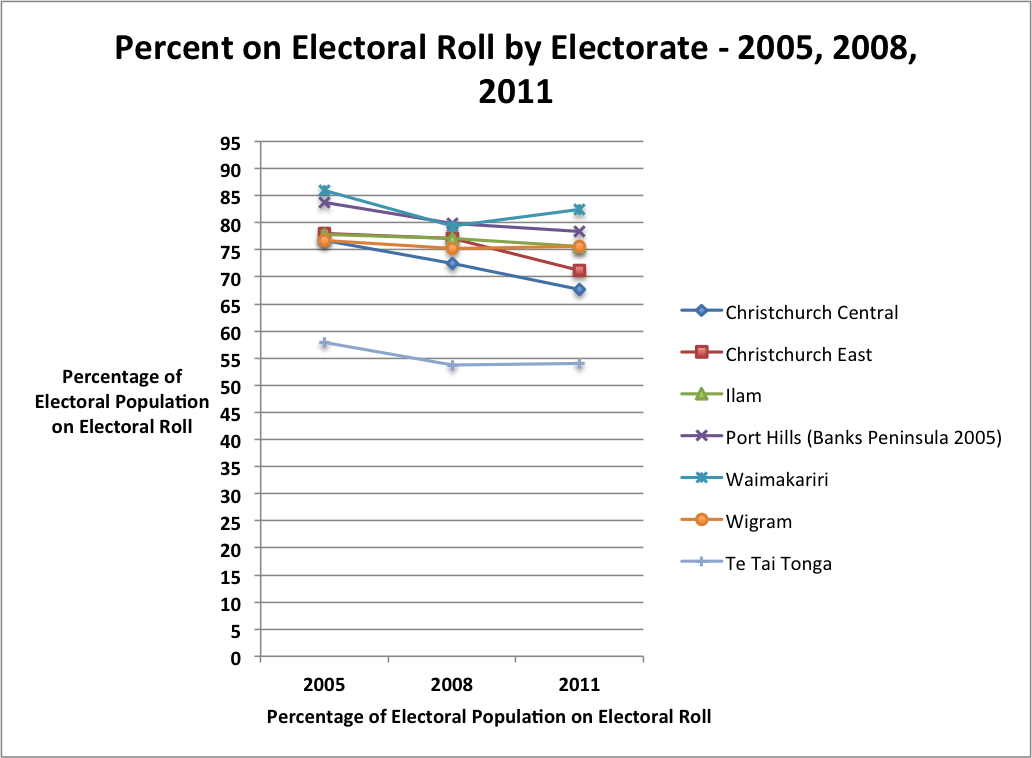
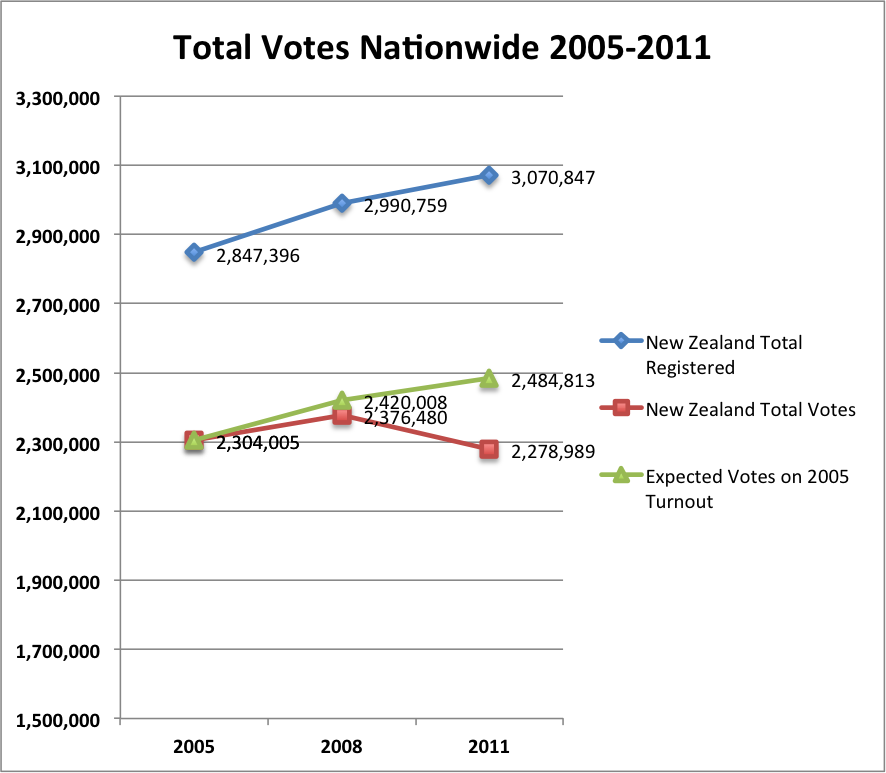
What has happened to Christchurch since the earthquakes, being locked out of the CBD for MONTHS, hasty demolitions, the heavy handed bullying and threats in the CBD, using zoning as a big stick, 50% compensation offers when GV was NEVER a measure of MARKET VALUES, empty promises of flash precincts that we would have to pay for ourselves, lack of democracy and democratic process, the CERA act with its unprecedented powers, etc. this has all been FAR WORSE than the earthquakes themselves.
Vote as you wish, but one day YOU WILL get exactly what you VOTED FOR.
Hi Bart,
Thanks so much for your comment.What’s happened here is certainly something that many people wouldn’t have believed possible a few years prior. Yes, it was a huge natural disaster but the fundamental basis for any policy response to that should have been to take the people with you. It’s hard not to conclude that, in many cases, the people came to be seen as the problem by the bureaucracy rather than the target of support.
Thanks again for the comment.
Regards,
Puddleglum
Pingback: Puddlegum on Christchurch - The Standard
Puddleglum I am another Cantabrian that hopes the country learns some lessons from the earthquakes and rebuild. I have written an article with this as its major theme that I hope will be published in interest.co.nz over the coming days. Look out for it.
The disaster was not the quakes themselves but the response. Much like the famines in India and Ireland were not caused by a lack of rain or a potato virus but by a political economic system that ignored the plight of the poor and let them starve to death. Amartya Sen discusses this in his book ‘Development as Freedom’, his strong point re Ireland is throughout the famine Ireland was exporting food to Britain. James Belich in ‘Replenishing the Earth’ expands on the economic history of Irish food exports. Fascinating and horrifying stuff. Check it out.
Hi Brendon,
I really appreciate you taking the time to comment and I hope your article gets published (and is not behind a paywall:-)).
You’re absolutely right that the quakes themselves have long since ceased to be the most disruptive part of the last few years for most people here in Christchurch. People can put up with a lot if they think everyone’s working toward the same goal and no-one is being treated unjustly (e.g., in war-time). It’s the loss of control and the sense of being ridden over, ignored, treated as an irritant, etc. that just gets so sapping.
I knew about Sen’s book but I’ll also have to check out Belich’s book to get a more local perspective. Thanks for the tips.
Regards,
Puddleglum
Yes it is published! Not many comments so far -but mostly very supportive.
http://www.interest.co.nz/opinion/70493/fridays-top-10-brendon-harr%C3%A9-national-vs-labour-housing-affordability-uk-councils-spy-
‘Replenishing the Earth’ p.445-6 discusses how Ireland ‘fed’ Britain.
Awesome post Puddleglum! I really appreciate this
National is unlikely to pay the price for their deeds. The MSM has not held them to account. Most of the public don’t really understand what has happened/happening here and why it matters. Being unaffected they can blithely pretend that things are getting better. Those who have been abused by the quake response have been dis-empowered. The dis-empowered in our culture are discouraged from voting by the harsh reality of generations of self serving politicians who do little to bring about a just and fair society. While voting is vital it can be hard for many to carry through on what feels like merely another fruitless attempt to better their lives. National is counting on it.
From the little I’ve heard (second hand) people in the rest of NZ have no idea what’s going on down here – even well educated and ‘well-connected’ people.
Can you update these figures when finals come out next week ?
Hi fastbike,
I’ll do my best to remember. It would be interesting to see the trends, though it does take a bit of time.
Thanks for commenting!
Regards,
Puddleglum